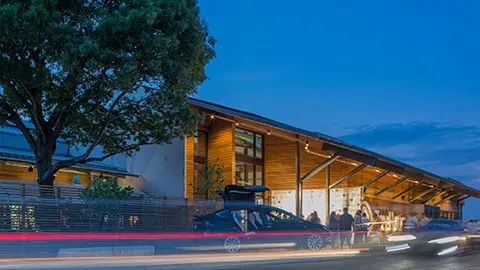Better EV Choices, Worse Public Charging
With automakers introducing new electric cars at a furious rate, the number of choices available to EV shoppers has never been better. But sales of EVs in the U.S. aren’t growing as fast as the number of choices. Changes to EV incentives mean many electric cars aren’t as affordable as they used to be, and many buyers still have concerns about charging. While most EV owners charge at home overnight, potential buyers still worry about public charging infrastructure for the times they have to take longer drives – or because they live in shared accommodation.

Customer Satisfaction Declines
According to the latest research from consumer insights firm J.D. Power, public charging infrastructure isn’t keeping pace with the growth in EV sales and interest. Its latest Electric Vehicle Experience (EVX) Public Charging Study shows that overall customer satisfaction with public charging has declined since 2022. Measured on a 1,000-point scale, customer satisfaction with Level 2 charging has declined by 16 points to 617, while satisfaction with Level 3 DC fast chargers dropped even further, down 20 points to 654. Satisfaction around every element of the charging experienced declined year-over-year.
The lack of satisfaction with charging could be a barrier to increased acceptance of electric cars, according to J.D. Power. Aside from cost, skepticism about public charging availability is one of the primary reasons shoppers choose not to buy an EV.
"The declining customer satisfaction scores for public charging should be concerning to automakers and, more broadly, to public charging stakeholders. The availability of public charging stations is still a critical obstacle, but it isn't the only one," said Brent Gruber, executive director of the EV practice at J.D. Power. “EV owners continue to have issues with many aspects of public charging, as the cost and speed of charging and the availability of things to do while waiting for their vehicle to charge are the least satisfying aspects. At the same time, the reliability of public chargers continues to be a problem. The situation is stuck at a level where one of every five visits ends without charging, the majority of which are due to station outages."

Volta and Tesla Score Highest in Electric Car Charging Networks
The J.D. Power EVX study ranked Volta as the best Level 2 charging network at 665 points, with Tesla’s Destination chargers ranked second at 661 points, and ChargePoint in third with 618 points. For Level 3 fast charging, Tesla’s Supercharger network ranked highest for the third year, with a score of 739 points – the only network above the segment average.
Interestingly, many manufacturers, including Mercedes-Benz, Ford, GM, Rivian, Volvo, and others, have announced that they will provide their EV owners access to the Tesla Supercharger network, and adopt the Tesla charging port, in the near future.
Certainly, satisfaction with non-Tesla fast chargers has room for improvement. Tesla owners, who represent the majority of EV owners currently on the road, ranked their own satisfaction with the Supercharger network at 745 out of 1,000 points, but their satisfaction declined to 550 points when using non-Tesla chargers. Drivers of other EVs, as they adopt the North American Charging Standard pioneered by Tesla, may see higher satisfaction when using Tesla Superchargers; certainly, the sheer number of Tesla Superchargers available will make finding public charging more convenient.

EV Charger Reliability Issues Continue
The 2023 EVX study had a number of other interesting findings, suggesting the overall public charging experience still has room for improvement:
- Satisfaction with public charging speed has declined year over year. Satisfaction with the speed of Level 2 chargers has dropped 36 points compared to 2022 to 455. DC fast chargers weren’t much better; satisfaction with charging speed for Level 3 dropped by 30 points to 588.
- Location is a key contributor to public charging satisfaction. EV owners’ responses show they chose charging networks and locations based on convenience, and the desire to get back on the road as soon as possible. Level 3 chargers on travel routes got higher marks, and Level 2 chargers near retail and entertainment venues, also scored higher.
- Charger reliability continues to be an issue for many EV drivers. Almost one in five drivers say they visited a charger that was not able to charge their vehicle, due to the charger being inoperable, or because of long lines to use the charger.
- Satisfaction with the charging experience varied across the country. Electric car owners in the Miami to Fort Lauderdale area in Florida had the worst experiences with charging reliability, followed by Seattle-Tacoma, Denver-Aurora, and Dallas-Fort Worth. The best charging performance was in the Cleveland-Akron-Canton area of Ohio, where only 12 percent of charger visits had an issue.
The results of the 2023 J.D. Power study will probably be concerning for everyone involved in the transition from gas to electric. Even though the vast majority of EV charging happens at home, future customers’ concerns about public charging must be alleviated for the time it takes to make the switch to electric. A better charging experience across the board is something a number of stakeholders are working on – but there’s clearly a lot more work to be done.
Now in its third year, the EVX study measures customer satisfaction with public charging across 10 factors: ease of charging; speed of charging; physical condition of charging station; availability of chargers; convenience of this location; things to do while charging; how safe you feel at this location; ease of finding this location; cost of charging; and ease of payment. In 2023, the survey had over 15,000 respondents.













